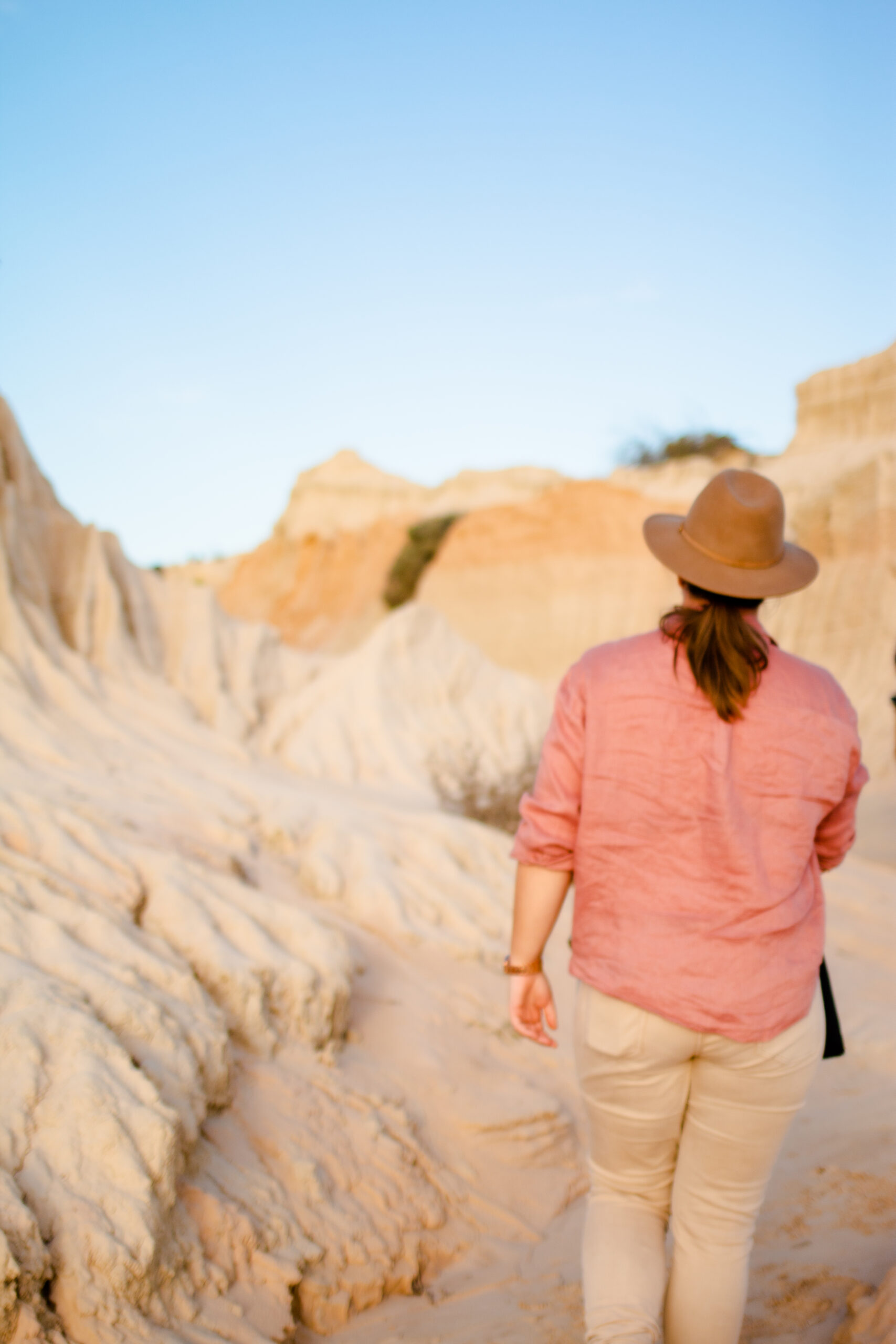Mungo National Park is an elusive part of the NSW outback which very few get to see. Here you’ll wander through the sands of time in a drought-ridden lake. Where thousands of years of erosion have sculpted sand and clay into ominous structures. This lunar-like landscape is the closest you’ll get to walking on the moon and happens to be at the base of Lake Mungo. This is a real-life example of how climate change and erosion can significantly alter the land. Camping in Mungo National Park is the main form of accommodation here, so here is your guide for the national park.
This will be your comprehensive guide to Mungo National Park where we will be covering all basis on accommodation, safety, travel, and what there is to do in the park.
Please be aware that this park is prone to flooding and can close without warning even with little rain, please keep an eye on alerts on the National Parks website.
Mungo Man & Mungo Women
Mungo National Park is best known for the remains of Mungo Man and Mungo Woman. These two individuals were found just meters apart in the park and were buried more than 42,000 years ago. The significance of these two individuals is that they are the world’s first known ritual burials. Mungo Woman was also the first evidence of cremation. The discovery of these remains has helped shape of knowledge of humans’ emergence of spirituality, beliefs and kinship and essentially led to this national park becoming a UNESCO world heritage park as well as an Australian National Park.
The rich history of the Indigenous Australians has been found in Mungo National Park which has also helped us establish links to the past and the culture of the Ngyiampaa, Mutthi Mutthi and Southern Paakantyi people. This site has great significance to Indigenous Australians and needs to be treated with respect and dignity.
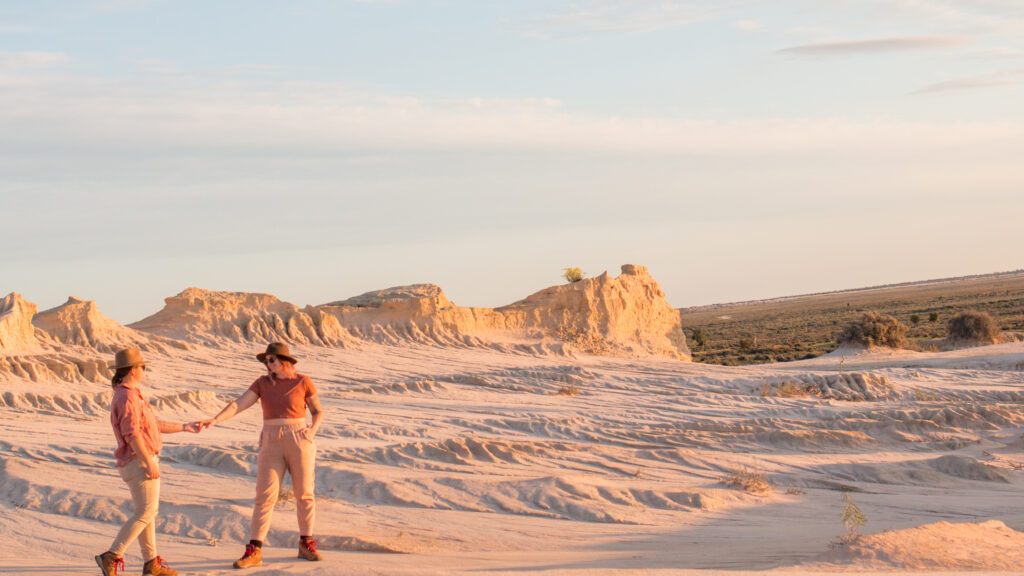
Mungo National Park Things to do
Mungo National Park is a photographer’s dream. To take full advantage of this scenic part of Outback NSW we recommend booking on a tour to access restricted areas. Below we will be detailing what to do in Mungo National Park.
Mungo Self-Drive tour
Take a dive around Mungo National Park and explore at your own pace. Here you will get to see the dramatic landscape of the World Heritage Park
- 70kms
- 2 hours recommended
Mungo Visitor Centre
A must in this national park is visiting the Mungo National Park visitors centre. Here you will learn about the rich indigenous culture, landscapes and archaeology of the land. The visitors centre also hosts many displays of the megafauna native to the area. As well as the ”wall of shame” where people believe they have been cursed by the park for taking artefacts, sand and rocks from the national park and have been sent back to the national park in hopes of fixing the curse.
The visitors centre also hosts free tourist information for the self-guided tour and you can book tours with the national park here too.
Mungo Woolshed
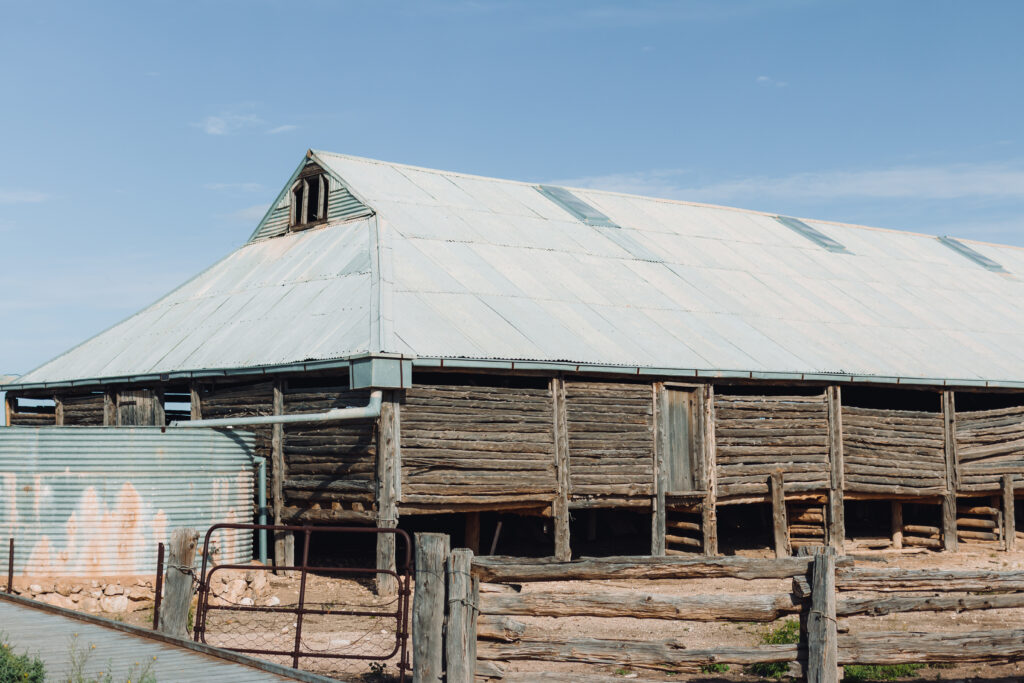
Right next to the Mungo Visitors Centre, you’ll find Mungo Woolshed which offers a unique view of the history of the region as a sheep station. Built-in 1869 the now-protected Gol Gol Station brought in thousands of flocks of sheep to the area where 18 men sheered over 50,000 sheep yearly.
Viewing and walking through the shed is a unique experience where you can envision the lives of the men on the station and the craftsmanship of the shed. Funnily enough, the shed still has the smell of sheep.
Walls of China
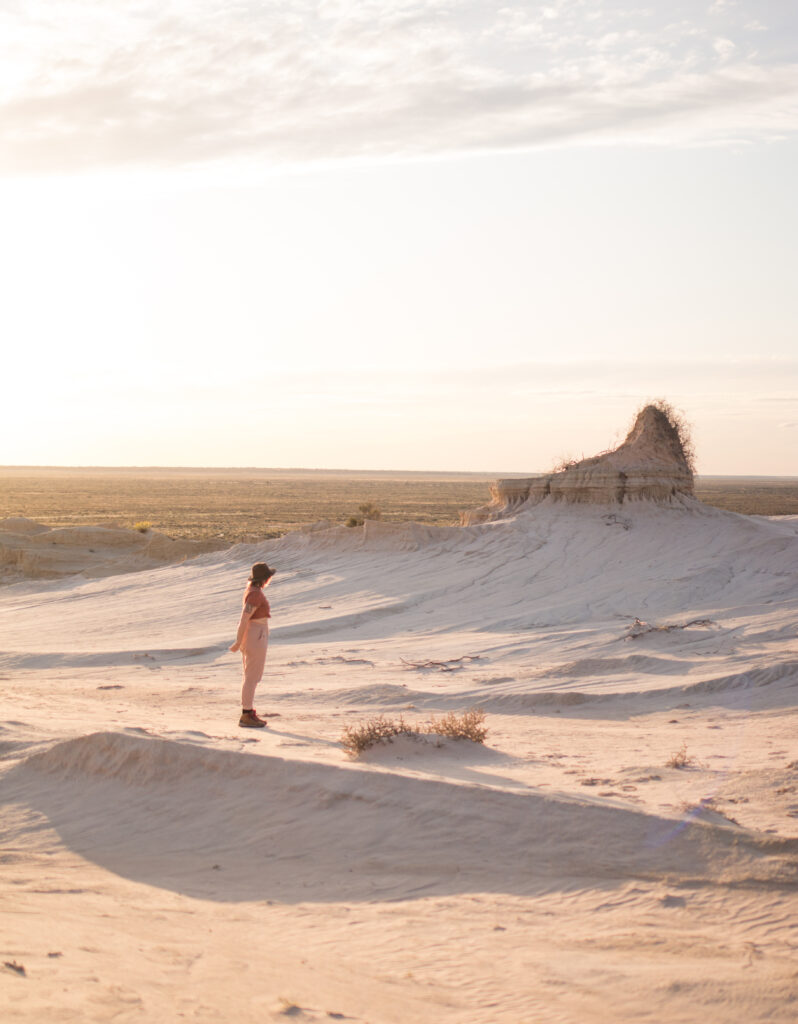
The most iconic part of Mungo National Park is the Walls of China. The now restricted area is visible via a viewing platform. However, to fully experience the area and the iconic sights it is recommended that you book a tour. Here you’ll learn about the Indigenous Australians’ history on the land and how the iconic structures known as the mungo lunettes made of clay and sand have been formed.
The tours run daily and cover a 2.5km route through the sand dunes exploring the vast landscapes and ominous structures over a 2-hour period.
These tours are run by NPS and Mungo Lodge by indigenous guides.
Prices vary from $30-$80 depending on the booking party and time of the session with the more expensive sessions occurring at sunrise and sunset, which are the best times to see the Walls of China.
Red Top Lookout
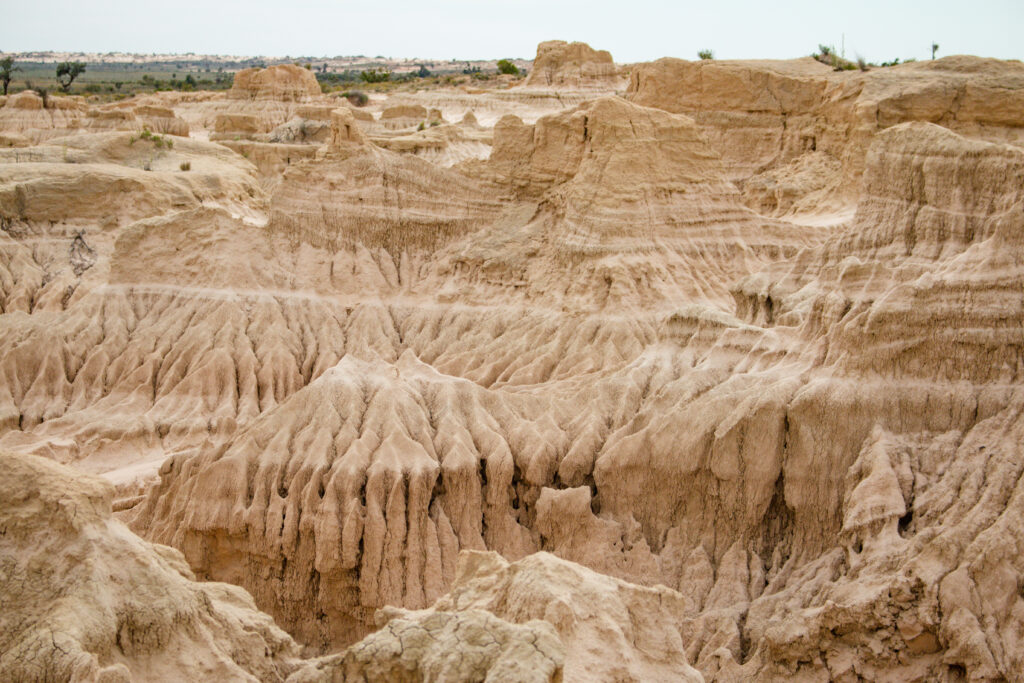
The Red Top Lookout in Mungo National Park offers a unique bird’s eye perspective of the unique textures and patterns that the park is known for. This unbeatable location has recently been renovated to include a boardwalk which is accessible for all to see the remarkable structures.
Here you can visibly see the long-term detrimental effect climate change and erosion have had on our land and what eventually led to the lake drying out.
Mungo Lookout
Mungo Lookout is a short drive from the Main Campground and offers scenic views of Lake Mungo. Here you can catch glimpses of the Walls of China and image how the area looked before years of erosion changed this area forever.
From here you can join the Grasslands Nature Stroll which takes you through the grasslands of this world heritage area in outback New South Wales.
Travel
Mungo National Park weather can be unpredictable and this national park is known for closures and roads being inaccessible. Be wary of this before leaving and if driving a 2wd take extra care in the park.
The best time to visit Mungo National Park is in September. At this time of year, you will find the wildflowers in full bloom which brings the normally barren desert to life.
Mungo National Park is approximately 12 hours west of Sydney or 8 hours from Melbourne.
Mildura is the closest town to Mungo National Park.
- 109 km
- 1.5hours
- unsealed road
- no reception
Broken Hill is another popular access point
- 317kms
- 4.25hours
- sealed and unsealed road
- no reception
It is important to note that there is no petrol available inside Mungo National Park, petrol is only available in the main towns nearby.
Mungo National Park Accommodation
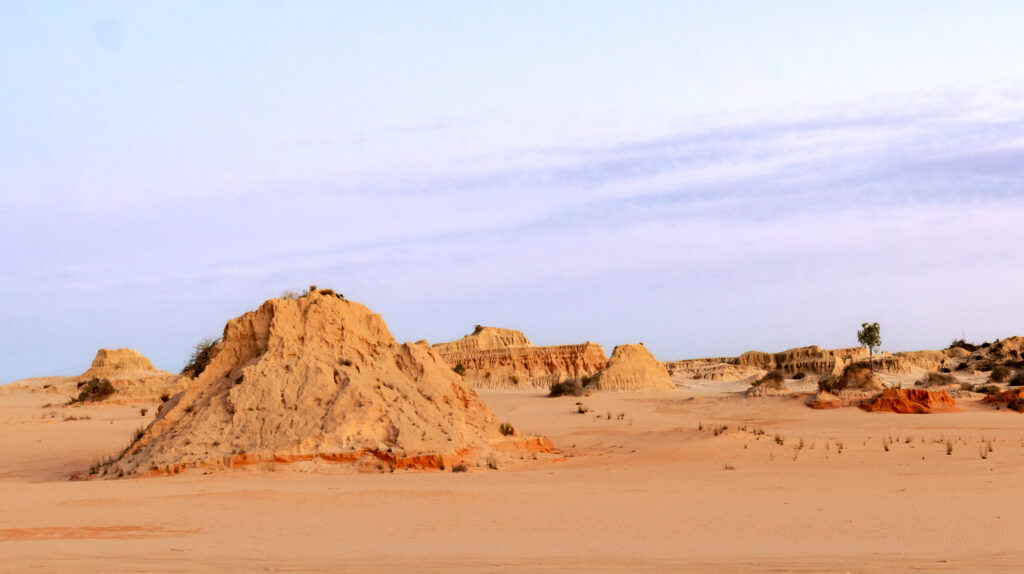
In Mungo National Park accommodation is limited, so planning ahead is advised. Below are the accommodation options in Mungo National Park.
Mungo National Park Camping
Main Campground
This is a basic remote campground in Mungo National Park located near the visitor’s centre. To camp at this campground, you must be self-sufficient with power, water and food. The facilities here are basic and on par with other national park camping options, however, there is an abundance of wildlife in this campsite which offers a nice change compared to other options.
- Suitable for caravans, tents, camper trailers
- Picnic facilities and BBQ facilities provided
- Long drop toilets on site
- Access is suitable for 2wd. However, after rain, it may become impassable
- No reception
- The site is abundant with wildlife
- 33 sites
- $24.60 per site per night. Plus National Park fees
Belah Campground (Currently Closed)
This is a remote campground in which you must be self-sufficient with power, water and food. This campground offers a unique secluded outback experience.
- Only suitable for tents and camping beside vehicles.
- Picnic tables
- Long drop toilets
- 12 sites
- No reception
- $24.60 per site per night. Plus National Park fees
Mungo Shearers Quarters
The refurbished shearers’ quarters offer a unique perspective to those after an authentic experience of the past life of Mungo National Park as a sheep station.
Mungo Shearers’ Quarters has 2 rooms with 3 bunk beds, 2 rooms with a queen and 2 bunk beds, and 1 room with a queen bed and 1 single bed. There’s also a shared toilet block and hot showers.
The shearer’s quarters are currently available for $71 per room per night. Linen is not provided.
Mungo National Park Accommodation
Mungo Lodge
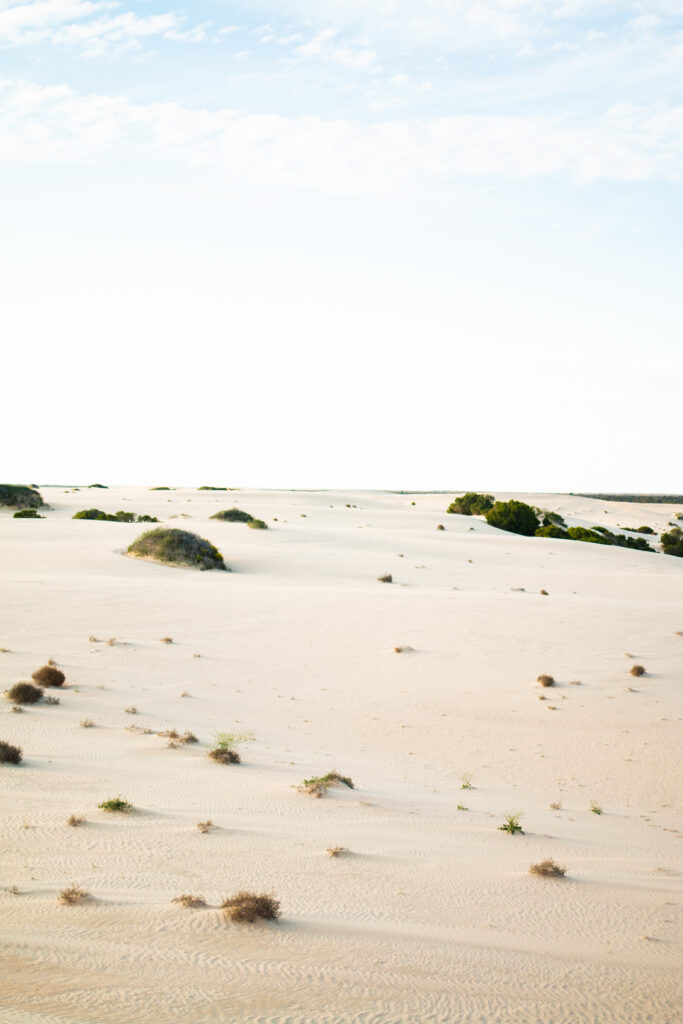
Camping
Mungo Lodge offers basic camping facilities on their premises
- Suitable for tents, camper vans, camper trailers and caravans
- Unpowered sites only
- Amenities block inc flush toilets and hot showers
- Telstra reception is available but limited
- Complementary tea and coffee
- $29pp per night
Cabins
King Deluxe
- Sleeps 2
- King Deluxe Room with ensuite, flat screen television, refrigerator, tea & coffee making facilities, open plan bedroom/lounge area and veranda.
- $300 per night
Twin Deluxe
- Sleeps 3
- Twin Cabin with en-suite, Flat Screen television, Tea/Coffee making facilities, lounge area and veranda.
- $300 per night
Family Cabin
- Sleeps 4
- Deluxe two-bedroom self-contained family cabin with one king bed and two singles, ensuite, lounge area, kitchen/diner, flat screen television and veranda.
- $500 per night
All Deluxe Cabins have the following facilities:
- Decked veranda with seating
- Parking adjacent to the cabin
- Daily housekeeping upon request
- Ensuite bathroom
- Quality linen and towels
- Personal amenities packs
- TV, bedside tables & lamps, full-size mirror
- Ceiling fans and adjustable heating and cooling
- Complimentary coffee & tea
- Please note: No hair dryer is provided
- National Park fees not included
Mungo Roo Glamping
Located behind mungo lodge there is also the option of glamping and staying in the Bunkhouse
- suitable for 2 people
- 1 double bed
- access to the amenities block
- Complementary tea and coffee
- Telstra reception is available but limited
- $199 per night. Reserve online and pay at the property
Unfortunately, there are no powered sites in Mungo National Park for people requiring power. You must be fulling self-sufficient, you camping set up or stay at the mungo lodge.
Where to eat in Mungo National Park
Unfortunately, there are limited options to eat in Mungo National Park and it is recommended you come to the park completely self-sufficient. However, if you plan on grabbing a snack or a bite to eat the only place available is Mungo Lodge.
You can read more about the options here
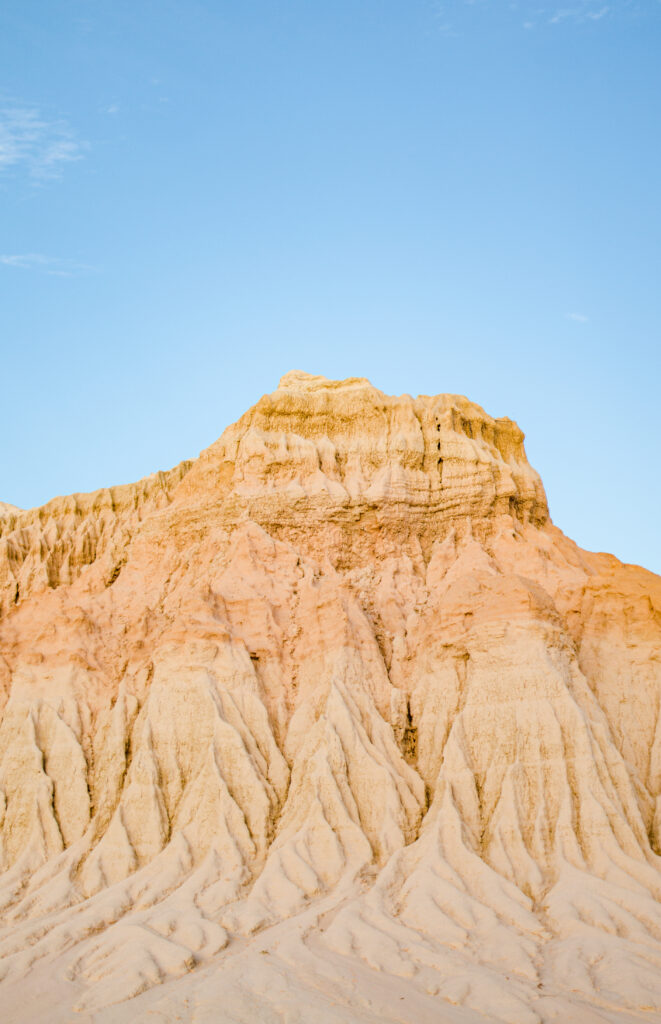
Safety
There is no reception in Mungo National Park. Sometimes Telstra users may receive reception near Mungo Lodge, however, it should not be relied on as it is unreliable. It is recommended that you use offline and paper maps while in the park to avoid getting lost.
It is also a good idea to look into investing in a PLB (personal locator beacon) if visiting the park. That way your location can be transmitted to emergency services under the worst-case scenarios since reception is not available in this park.
We hope this helps make your trip to Mungo National Park easier. If you would like another National Park Guide, make sure to check out the Warrumbungle National Park Guide
